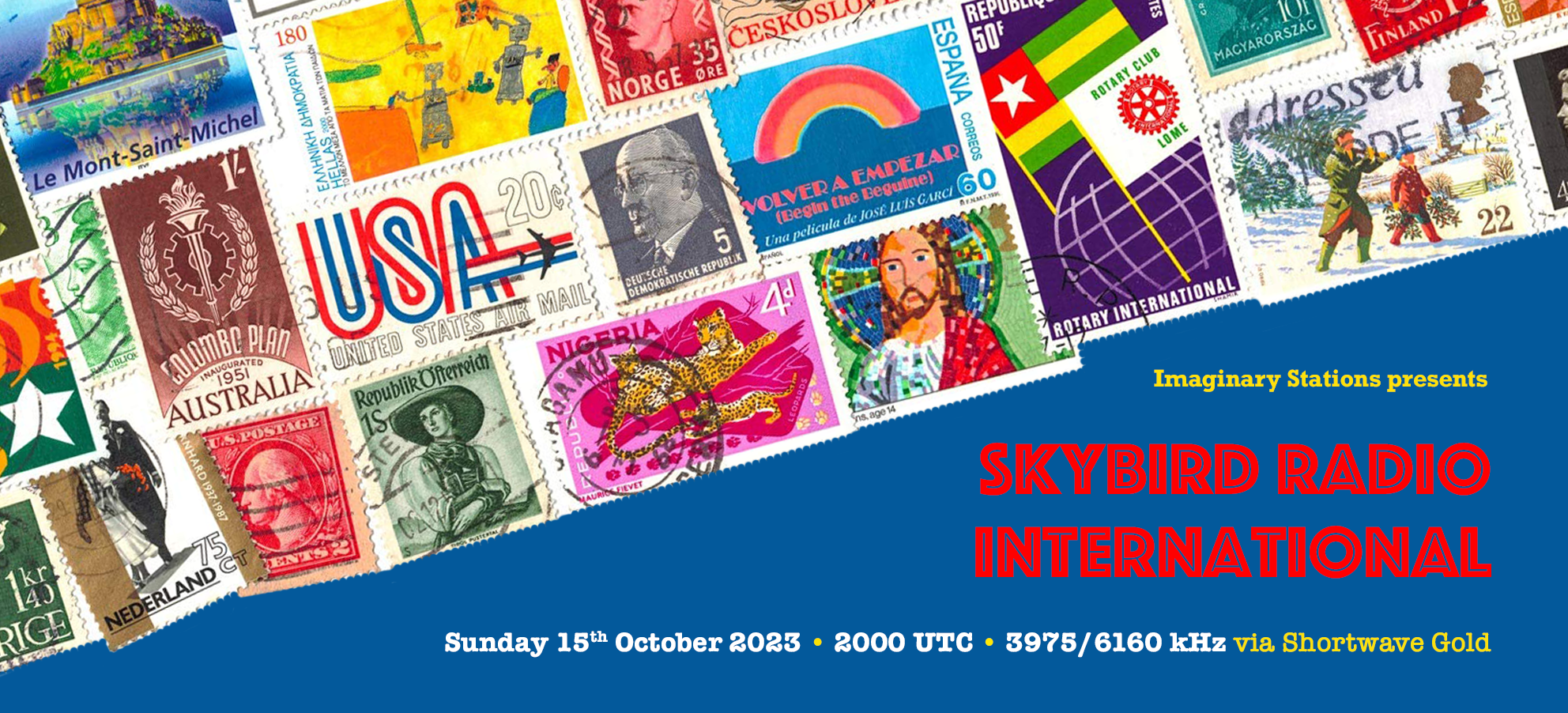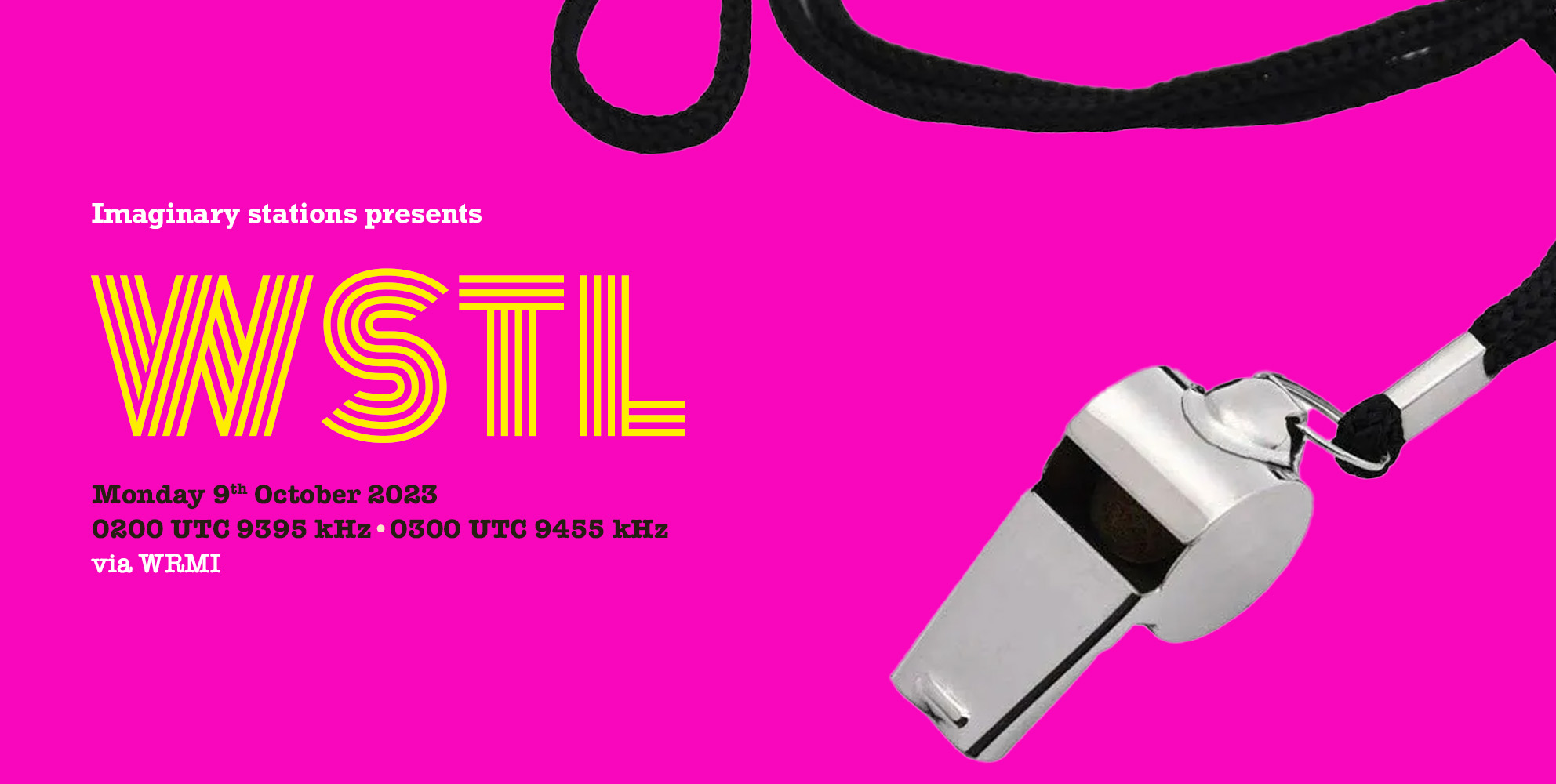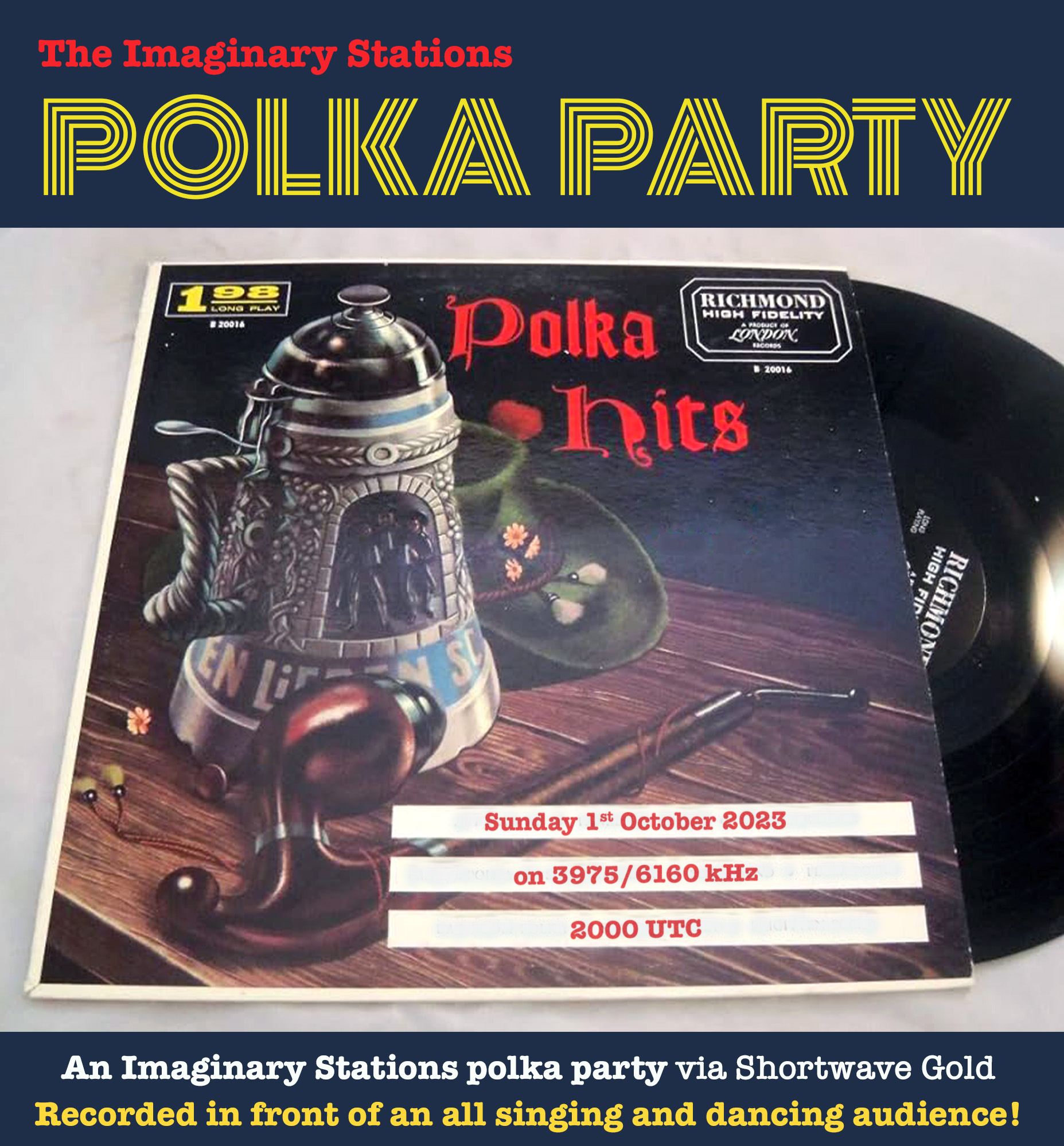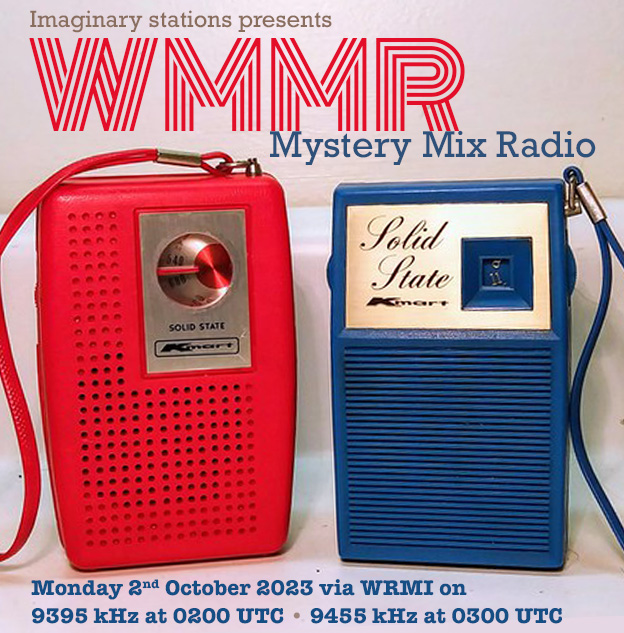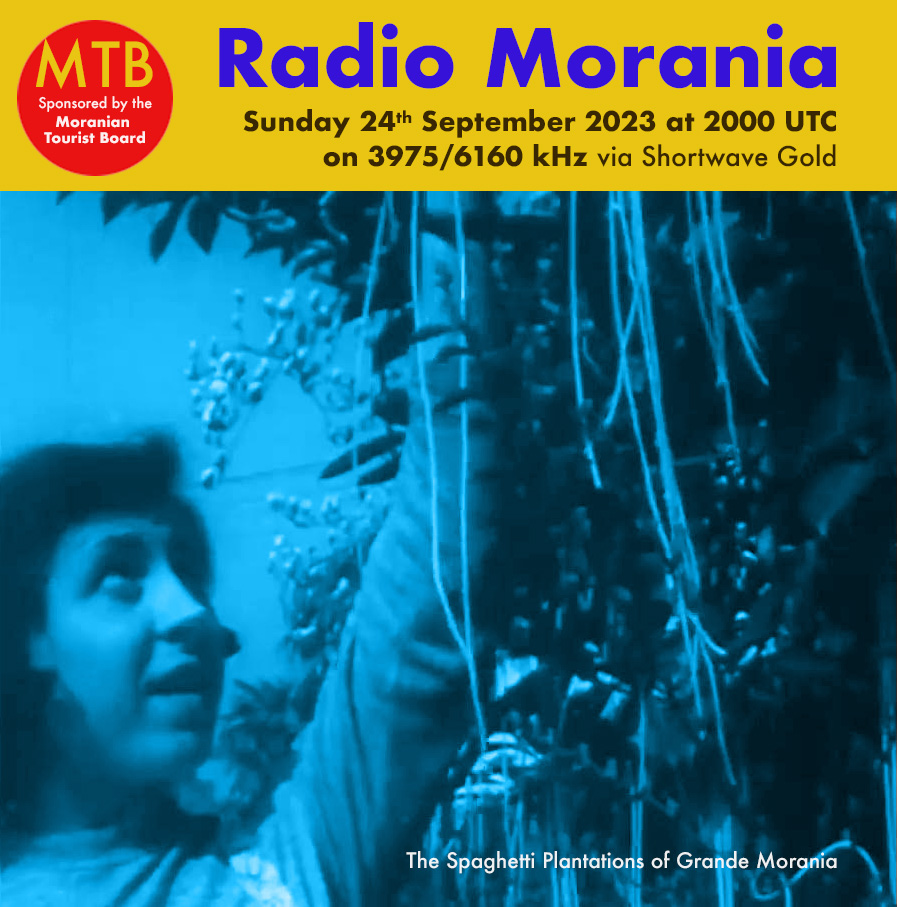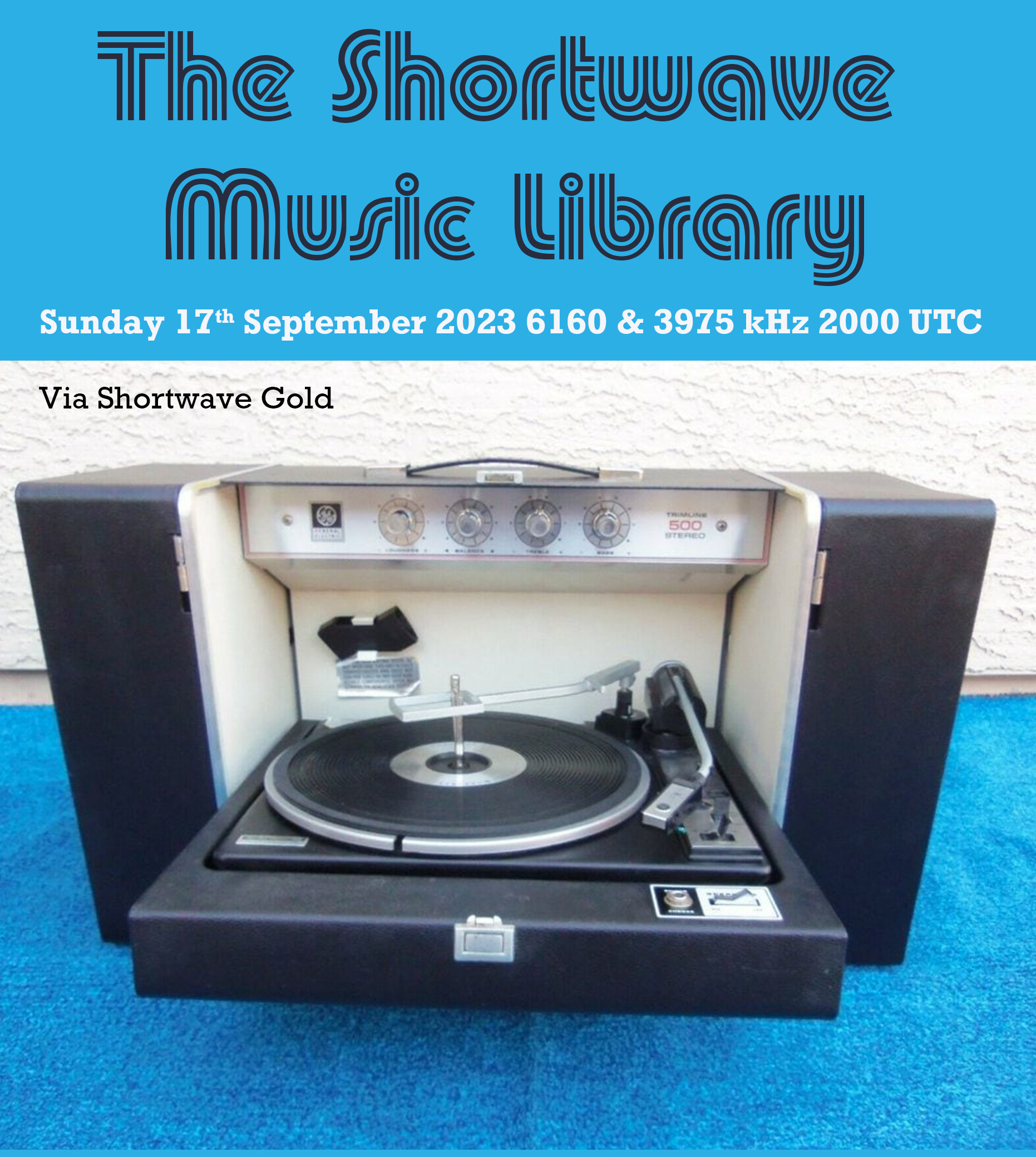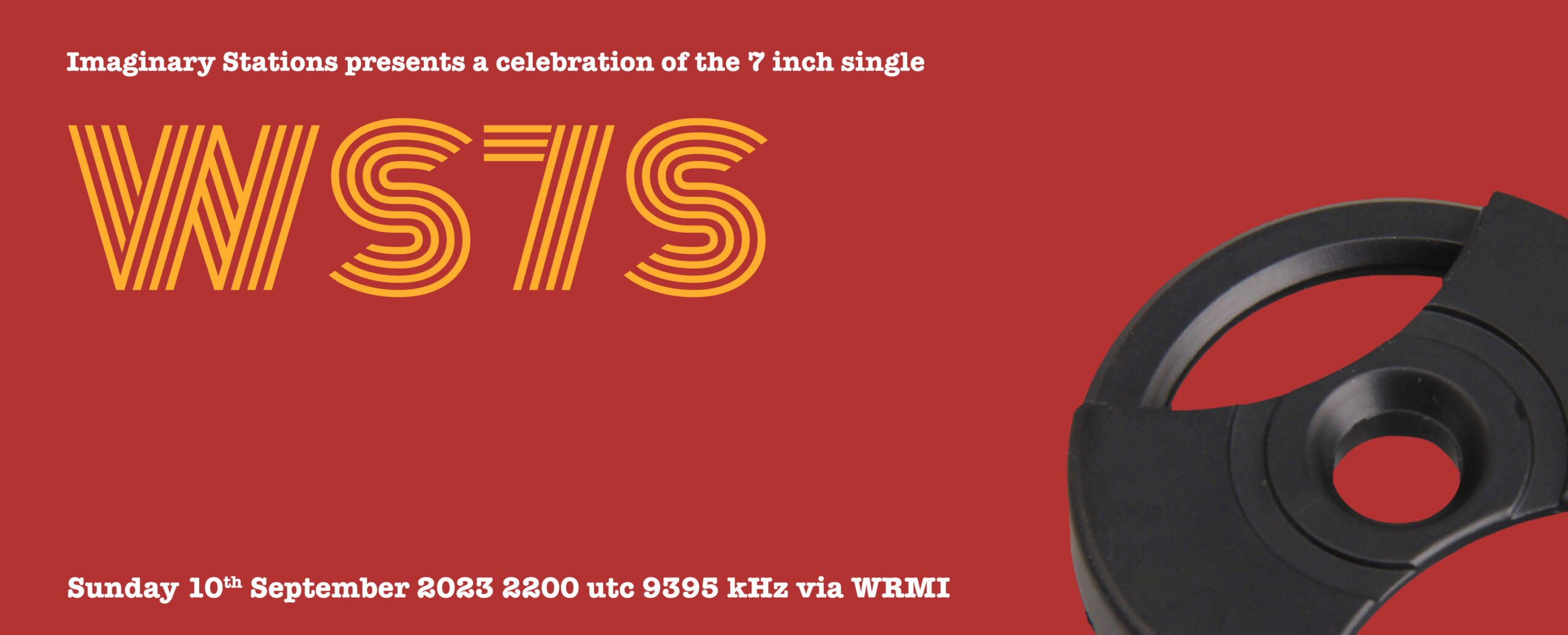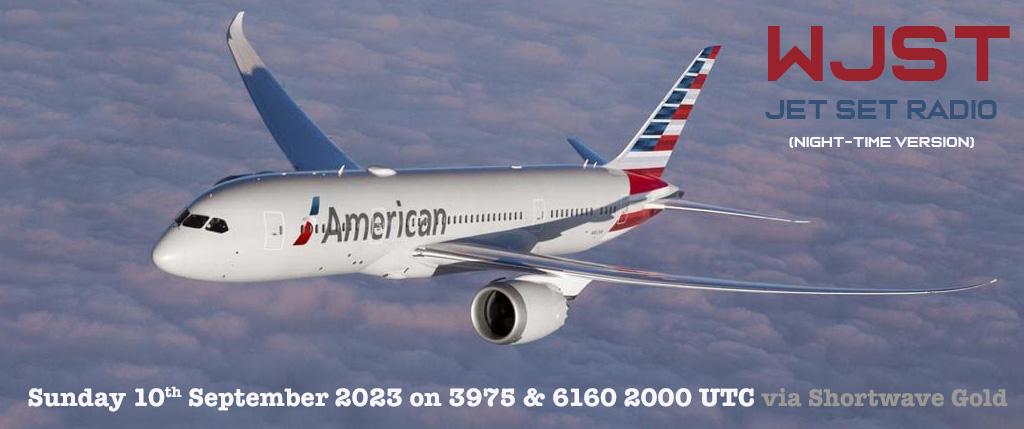
Iglesia San Francisco, Loja
Many thanks to SWLing Post contributor, Don Moore–noted author, traveler, and DXer–for the latest installment of his Photo Album guest post series:
 Don Moore’s Photo Album: Loja, Ecuador
Don Moore’s Photo Album: Loja, Ecuador
by Don Moore
A few months ago I did a two-part feature on my favorite small Latin American city, Cuenca, Ecuador. This time let’s journey to a nearby smaller city that I don’t know very well but want to spend more time in.
Loja is about two hundred kilometers south of Cuenca on a paved highway that runs through a long valley before climbing into the mountains to twist and turn the rest of the way. Look at the route on Google Maps and you’ll see what I mean. Today it’s a picturesque four-hour bus ride but when I made the trip the first time in 1985 it was a tortuous twelve-hour journey on rough dirt roads.
The roads today may be smooth and paved but Loja is still the most isolated major town in Ecuador. The city is so far south that it is closer to the Peruvian border than it is to any other town of size in Ecuador. This isolation has both forced the region to be self-reliant and cushioned it from problems in the rest of the country. For three years in the mid-1800s the province of Loja even governed itself as a peaceful independent country while the rest of Ecuador was mired in a bloody civil war.

One of Loja’s many picturesque streets.
Loja’s population of around 200,000 (a third the size of Cuenca) makes it the twelfth largest city in Ecuador. But Loja is one of those places that has always punched above its weight. The economy is strong as it’s the center of one of the best coffee growing areas in South America and the city is the main transit point for the gold fields to the east in the Ecuadorian Amazon. Loja is widely thought of as the most cultured and educated city in the country. Two of its universities rank in the country’s top ten. And everyone agrees that Loja is the center of Ecuadorian music. One of the city’s several museums has room after room filled with displays about the many famous musicians that have come from (and continue to come from) Loja. Free concerts are held in the city’s plazas at least once a week.
Loja has always been forward-looking. In 1890 the city installed one of the first hydroelectric generators in all of South America. That was just eight years after the first plant was installed in the United States. A little over a century later, in 2013, the first windfarm in continental Ecuador was constructed on a ridge above the city. The eleven windmills produce sixteen megawatts and phase two of the project, which is now under construction, will add another forty-six megawatts. A recently approved third phase will add another 110 megawatts.

Windmills overlooking Loja
The First Visit
My first visit to Loja was in March 1985 after that long twelve-hour bus ride from Cuenca. I remember Loja as being a pretty but sleepy small city. We only stayed two nights and one day. My primary goal was to visit Radio Centinela del Sur and get a QSL for myself and several friends. I don’t recall anything from that long ago visit but I did get the QSLs. Radio Centinela was founded in 1956 so it wasn’t the first radio station in Loja. But it was the first one to last for more than a few years. On shortwave Radio Centinela del Sur was a station that changed frequency a lot. I first heard it in 1974 on 5020 kHz but most of my logs were made in the early and mid-1980s when 4890 kHz was in use. In the 1990s Radio Centinela del Sur used 4771 and 4899 kHz at various times. The station left shortwave for good by the late 1990s.

Radio Centinela de Sur in 1985
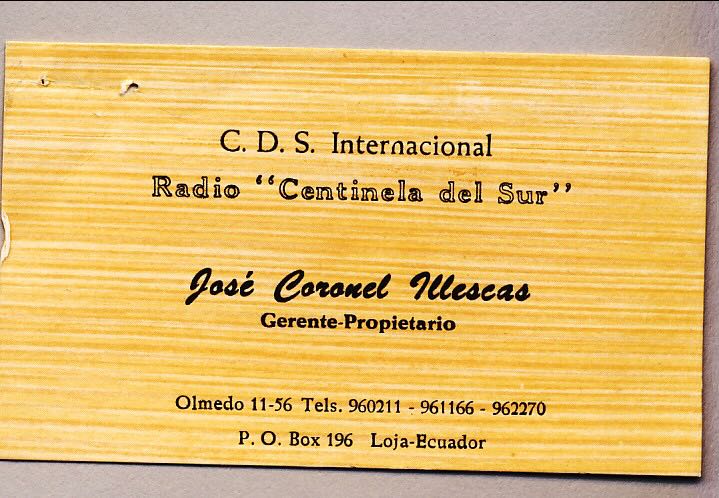
Business card from 1985
The second oldest station in Loja was Radio Nacional Progreso, founded in 1958. I have many logs of the station on its 5060 kHz (variable) frequency from the 1970s through the 1990s. I don’t remember why I didn’t visit them in 1985. Maybe the office was outside of town and difficult to get to. Loja’s other shortwave station was the Catholic broadcaster Radio Luz y Vida, founded in 1967. In the early 1970s the station used 4825 kHz on shortwave but around 1978 they switched to 4850 kHz. I last logged them there in 1997. Radio Luz y Vida was only a few blocks from our hotel and I stopped by several times but the inner door was always locked and I never got to see more than the entrance way. Continue reading →

